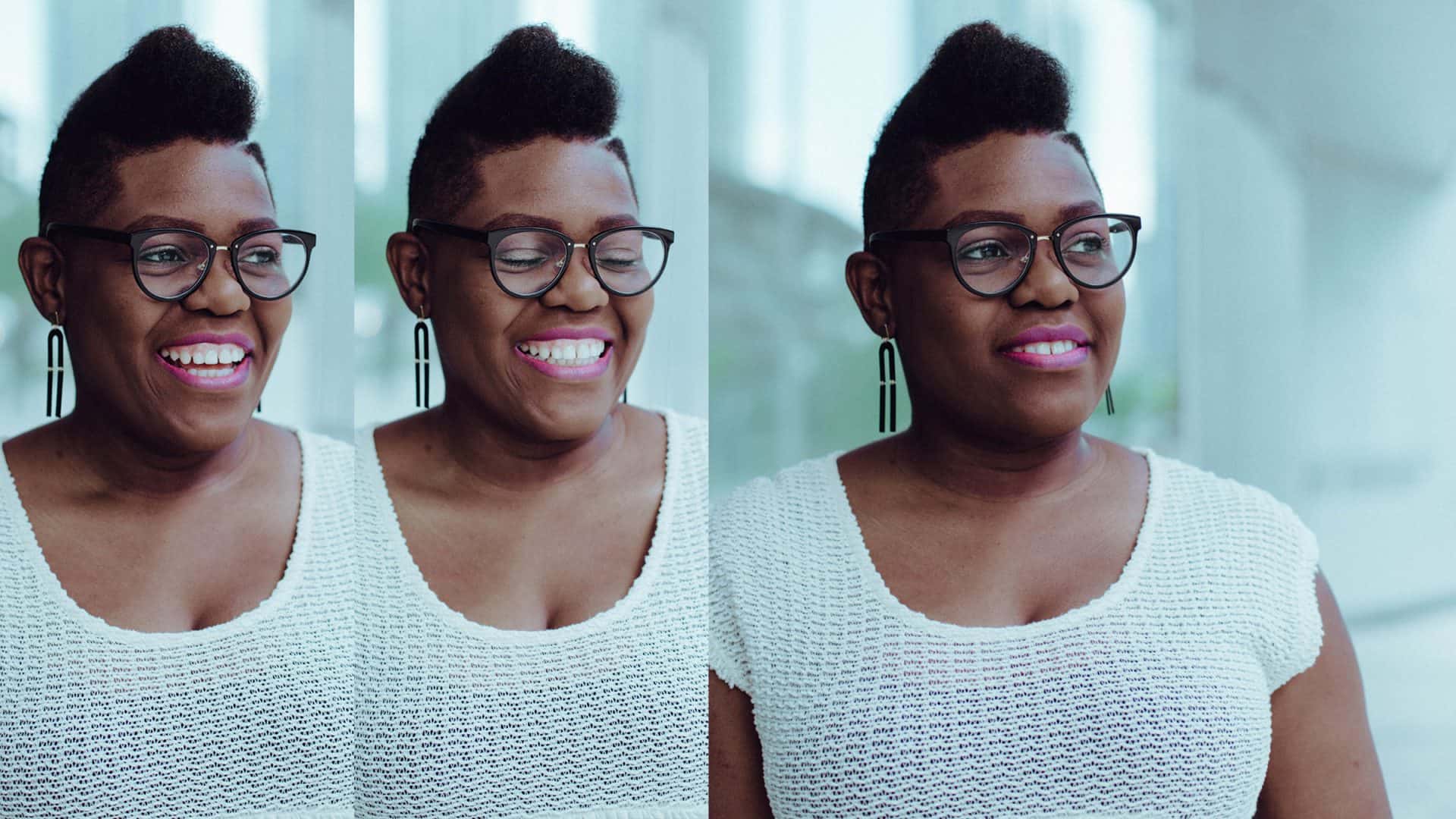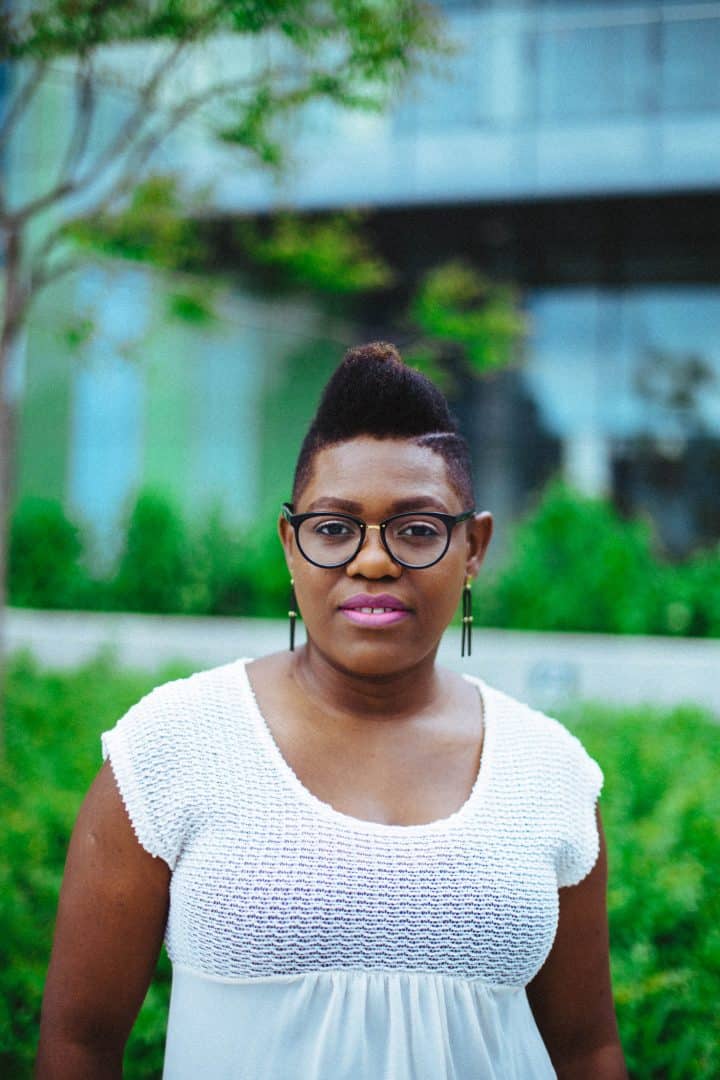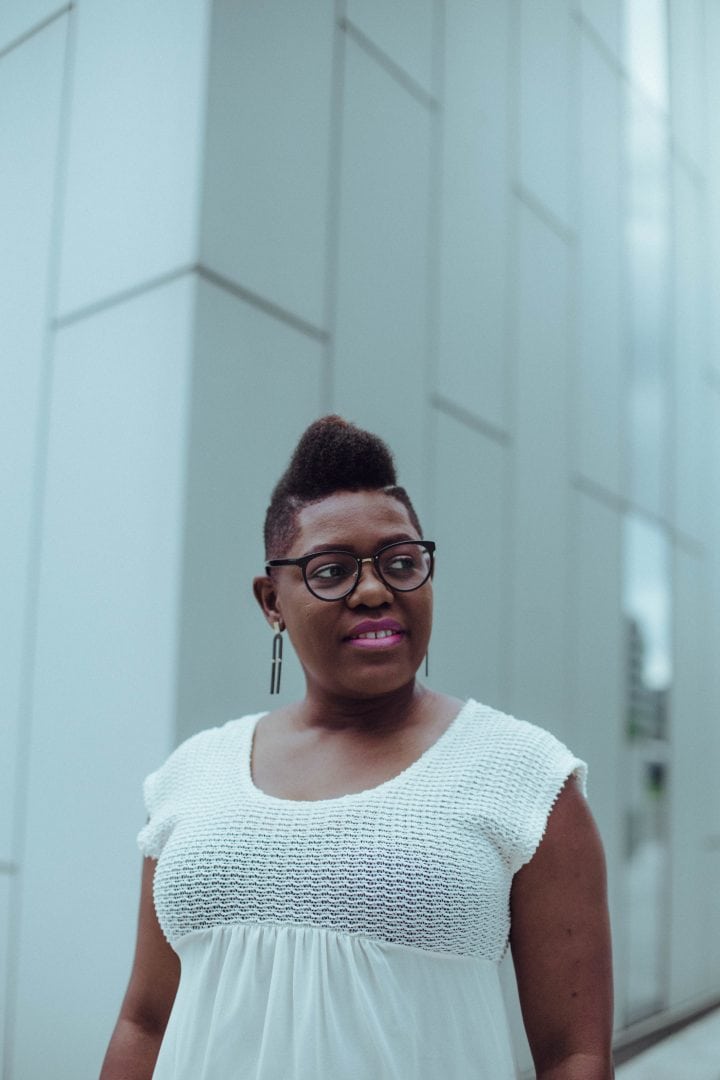
Q&A with: Akio Maroon
Akio Maroon’s appointment to the board of Pride Toronto signals a significant shift in the organization. As a Black, queer activist, educator and single mother of two, Maroon brings a wealth of experience to this role, which they hope to leverage to benefit communities that have long been ignored within the larger LGBTQ* community in Toronto. We had a chance to chat with Maroon about their vision for making Pride Toronto truly inclusive of all groups within the queer and trans identity spectrum.

Q: How did you get involved in organizing for Pride?
Akio Maroon: I actually did not want to join the board. With all the controversy and everything that was going on with Pride, I saw it as an opportunity for constructive conversations and lasting change. We had been – “we” as in the black queer community, sex workers, differently abled folks, racialized women of colour, people within the trans spectrum, so when I say “we” I mean us, the marginalized of the marginalized—have made consistent efforts to work with Pride around anti-oppression and address the pinkwashing of Pride for many years. The white flavourless cis-heteronormative image that was being ideologized has never been how we saw ourselves. There has been that push back for over ten years within the gay community and I heard, felt and witness the ever growing frustrations within my own intersectional community. Lots of heavy lifting needed to be done, and I didn’t feel like I was that person.
I just had a baby–my second child, a beautiful and magnificent little girl, who was born deaf and, due to a birth injury, has a permanent physical disability. As a first time single parent to a child with a disability, I have been overwhelmed with the level of complexity and sheer volume of things I didn’t know that I must now be an expert on and advocate for. I’m usually bottom-of-the-barrel tired, exhausted, not having anything left to give, but I could feel that change was on the horizon. Knowing that there’s a $10 prohibitive cost to people joining the membership and having any say vote-wise or otherwise, I decided to rally a few allies and queers with financial privilege to donate $10 and facilitate the membership of LGBTQ* persons who are poor or underemployed, a youth, a racialized person, a marginalized person who just can’t find that $10 to spend on a membership so they can have an opportunity to have a voice in a community group that is supposed to be theirs.
Most people thought that just by being a part of the LGBTQ community that they automatically have a voice. But Pride is set up as this organization with a membership, and only members have a voice. So that was the first thing. That was the only thing I thought I could do to help folks who usually don’t get a vote, people who don’t usually get heard.
Q: Why did you decide to run for a board position?
AM: Two weeks before the AGM they released the names of people who were running for the board and it was disheartening. It was disappointing. It was not just the people who were running, but the people who were running that the current board approved. It was disappointing because I felt like with the town halls and with everything going on, that the board would have been awakened to say, “OK, well, let’s get some new ideas, fresh ideas, different from how we were thinking traditionally, to be on the board.” It’s not what I saw. The uproar was loud and prevailing within the community and that’s when it was suggested by a well-respected older lesbian that I run. By the time I started taking the suggestion seriously, we had 24 hours to have my name validated as a nominee. The only way to get in at that point was to have ten current members submit a nomination. At that point I knew maybe four people who were current members, mostly because membership is not something that is public. A white comrade said, “Leave it up to me.” Less than fifteen minutes later she contacted me to say that I had the ten names. We’re going to submit it.
As a black queer single mother who has done mostly grassroots work, I noticed that there was a lot of class privilege among the folks who had gotten through thus far and that’s not my lived experience. I’ve had to hustle, and work twice as hard for half as much. So I said, “OK, well, let’s do it. Let’s see what happens, what becomes of it.”

Q: Considering the intersections of your identity, what are some of the changes you hope to bring to Pride Toronto?
AM: Most of what I’ve seen advocated for so far has been marriage equality and fertility funding; it’s a great thing that we’ve come a long way as a community and for that I am proud. It would be remiss not to note that most of the folks who usually benefit from these wins are usually white, upper class gay men and lesbian women. We’ve seen wins in laws passed. That’s not the reality for most people living within the margins and the working poor. We are struggling to survive, some are crowd-sourcing for necessary gender affirming surgeries, and struggling to find shelters that are safe for us. I myself had to do a GoFundMe campaign for medically necessary treatment, therapy and medical devices for my infant daughter. That is our lived reality. Marriage equality is incredible, but the fight isn’t over until we’ve achieved full equity. These are some of the things that I wanted to really hone in on during my term.
Q: Why do you think there’s so much controversy around the participation of Toronto Police at the Pride parade?
AM: Let’s be real: The City of Toronto funding was not for the actual parade march, it is for the accessibility component of the festival. So pulling out funding would actually directly impact accessibility of the cultural festivities and would have no impact on the actual parade itself. But if you read the spin in the media, you would not know that.
I think that society at large has been distracted by the well crafted media spin around Pride vs. the police and the police marching armed and in uniform during the parade. What they haven’t heard is that there have been great wins as a direct consequence of community advocates who have been asking for these changes for years and never gave up—Black Lives Matter protest and their subsequent demands, and community members who showed up, voted and held Pride to an accountability standard that hadn’t been done before. Where accessibility is concerned, Pride is bringing back an accessibility area where folks who are deaf and hard of hearing can come together, The South Asian stage is back, there’s increased funding and programming for youth stages— just to name a few. I think that there are so many wins that everyone can enjoy, feel safer and not just included but heard and integrated at every stage of the planning and execution.
What really struck me is the fragility of white supremacy. I know why that is and it’s important for folks to take a critical look at policing in Canada and its history from denying Indigenous sovereignty to acting as bounty hunters for escaped American slaves and of course the protection of white power and its interests—from white-governed banks and institutions to the chastity of white women. When anyone challenges white supremacy and the societal privileges that violently represses and disadvantages others, then there’s going to be a huge push back because racism and systemic oppression has been the norm for over 150 years. It’s as Canadian as maple syrup and poutine. I think when we were never at the table to begin with, fighting for a seat at the table is going to be something that’s hard and long-fought. I don’t expect the conversation or the struggles to end today or tomorrow, with this Pride or with the next Pride. But we’re going to take in steps forward and that’s how we’re going to keep at it. We’re going to be resilient, we’re going to be strong and powerful and keep moving on wards and upwards.
Q: Why is your appointment to the board historically important at this point in time?
AM: I don’t know that my specific appointment is “historically significant” I do know that where we are as a community and the conversations that we are having can spur systemic lasting changes and that in itself is revolutionary. As for me I am a Black mother first, and queer second, I just happen to be one voice on the board. I am grateful that there have been accessibility accommodations around child care, but I’m an out-spoken, underemployed, hard of hearing human right advocate and sex work organizer. I think that my very being challenges a lot of people at their core. Whether you are straight or not, there is a lot of cis-heteronormative baggage that we bring into the queer community around. We bring a lot of our prejudices around culture, around gender and race. There’s still a lot of stigma towards sex workers, stigma around drug users, stigma around being poor and underhoused. And so for me having a seat at the table feels like a first step in a larger plan to reorganize and revolutionize community pride. It also feels like a huge weight to carry as well because I my community has been waiting for change for so long. It is now on my shoulder to carry that and bear that. I have a lot of responsibility and I don’t take it lightly. There will be criticism there has always been hate mail and racist attacks, that’s unfortunately the reality of any Black womxn who opposes the oppressive status quo. I talk to my girls about it. My eldest often asks, “So how’s Pride going?”

Q: What’s your vision for Pride this year?
AM: Oh man, you’re trying to make me cry. This year has been challenging because of the short amount of planning time the faux controversy. I can only speak for myself but I’d love to be apart of curating a great festival, make changes that are significant to the fabric of planning and organizing of it, so that means increasing funding to places that have been lacking those funds to curate their own stages, making sure that there’s a South Asian stage, making sure that for everyone with accessibility needs that they’re needs are being met. And not just met so that they can participate but also create a space for them to feel like they are a part of Pride. And so a Pride+ sign is very integral to that; it’s asking, “What are you bringing to Pride?” What do you add to Pride?” I see a change from, having people who typically usually don’t come to Pride anymore because it’s been very hurtful, very harmful, very oppressive, very racist—having that change. It’s not going to be perfect— not by a long shot, not after three months of planning. But I think, for me is to see the difference between this year and last and know that people are able to come out and feel loved and feel respected and feel that after years and years of fighting to be heard, that we can say you’ve been heard, you are respected, you are valued and especially honouring our Indigenous community members. That is my personal goal for this year.
Q: And what about next year and beyond?
AM: I’ll keep listening and learning from the incredible volunteer lead teams. I’m just getting my feet wet and I know that we as a community still have a long way to go, so I’m hoping to build on this momentum and help create a truly safe, anti-oppressive, anti-racist space that goes above and beyond what we’ve been spoon-fed inclusion should look and feel like. I would love to see more culturally and socio-economically diverse people with differing abilities on the board—people with lived experiences that are reflective of the of the struggles we face outside of homo-nationalistic rhetoric. When we’re all working together, the sky’s the limit.